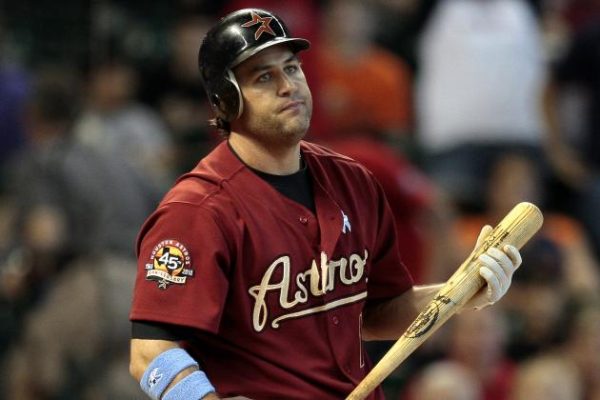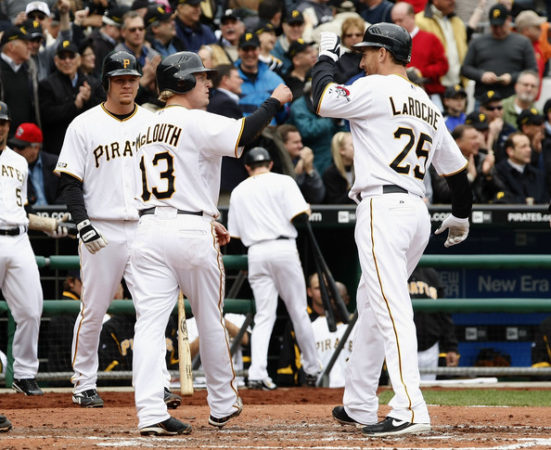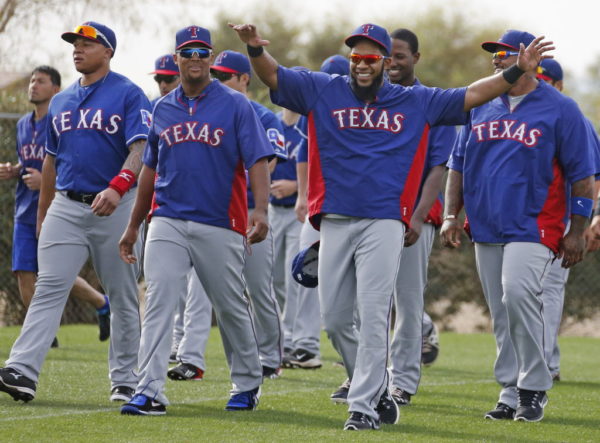The Times Other Teams Got Padres-ish

2009 Houston Astros
Record: 74-88 (.459), Finished 5th in the National League Central
Runs Scored Per Game: 3.98
Runs Allowed Per Game: 4.83
The 2009 Houston Astros were a classic case of a group of veterans taking their last real run at playoff glory. The team carried a payroll over $100 million, with over $60 million tied up in past-their-prime versions of Carlos Lee, Miguel Tejada, Lance Berkman, and Roy Oswalt. That’s not to say those players had bad years. Lee and Berkman each hit at least 25 homers and drove in at least 80 runs. However, the whole package was very much one built on experience and veteran savvy, not youth and energy. The winter signing of aging backstop Ivan Rodriguez turned into a mid-season trade with the Rangers for two minor leaguers. Journeyman Wandy Rodriguez ended up fronting the rotation as Oswalt continued his fall from ace status.
Two bright spots did emerge over the course of the year, as outfielders Hunter Pence (25 home runs, .282 batting average) and Michael Bourn (.285 batting average, 61 stolen bases) both made their presence felt at the big league level. The summer’s draft would bring future stars Dallas Keuchel and J.D. Martinez into the fold. However, things would ultimately get worse before they got better. The Astros would attempt one final run in 2010 before deciding to undergo a controversial teardown prior to 2011 in which Berkman, Pence, and Bourn would all be traded to contenders. Without their centerpieces, the Astros would limp to three straight 100-loss campaigns, patenting the all-out rebuild that the Padres seem to have adopted of late. All of those losses, however, would also result in three straight Number 1 picks, one of which would become shortstop Carlos Correa, now the face of a team considered by some to be a World Series contender in 2017.
2009 Pittsburgh Pirates
Record: 62-99 (.385), Finished last in the National League Central
Runs Scored Per Game: 3.95
Runs Allowed Per Game: 4.77

The Astros were not the only team who got a little Padres-ish in 2009, as they were joined by the similarly down-on-their-luck Pittsburgh Pirates, the worst team of the six in this study. Unfortunately, based on both run differential numbers and roster construction, these Pirates might also be the closest comparison to what the hometown Padres could accomplish (for lack of a better word) in 2017. The team’s highest-paid player was Golden Gloved shortstop Jack Wilson, at just over $7 million. Players who did perform well, such as first baseman Adam LaRoche and second sacker Freddy Sanchez, ended up in different uniforms by the deadline. The pitching staff was a collection of journeymen and also-rans needed to eat innings without being awful. All starting to sound familiar?
It was clear that the Pirates of 2009 were building for the future for most of this campaign. Rookie center fielder Andrew McCutchen was granted a full-time role and continued his development into the annual All-Star we know him as today (and, like a certain center fielder in America’s Finest City, McCutchen was just 22 years old at the time). The team signed international free agent Gregory Polanco over the summer, and would go on to use their top draft pick the next summer on promising pitcher Jameson Taillon.
The team would be even worse in 2010, dropping 105 games and using the resulting number one pick on developing ace Gerrit Cole. Those growing pains, however, would pay off soon enough, as that young core would mature into a playoff contender, and the Pirates would return to the postseason as a wild card team in 2013, ending a 20-year absence.
2014 Texas Rangers
Record: 67-95 (.414), Finished last in the American League West
Runs Scored Per Game: 3.93
Runs Allowed Per Game: 4.77

Before we explore the details of the Rangers’ 2014 campaign, let’s offer a silent prayer for them. The team carried one of the highest payrolls in the league at over $126 million, and had run off four straight 90-plus win campaigns, two of which ended in trips to the World Series. The team entered the season with exceedingly high expectations of another playoff push in 2014.
Their reward? One of the worst records in baseball. The culprit was the always-devious injury bug, which struck early and often over the course of the season. The team’s highest-paid player, Prince Fielder, hit the shelf with a herniated disk in mid-May and would miss the rest of the year. Martin Perez tore his UCL and required Tommy John surgery. Derek Holland would pitch in just six games following off-season knee surgery, while prized prospect Jurickson Profar tore a muscle in his shoulder during spring training. High-priced stars Adrian Beltre, Shin-Soo Choo, and Yu Darvish also missed time over the course of the year.
The good news for the Rangers was that all of those unforeseen setbacks would only ruin a single campaign, and the team would go on to claim each of the next two division titles. Consequently, for the purposes of this study, they are more of an anomaly than a serious comparison to the Friars’ fortunes.
The Verdict
Ultimately, then, we have six teams who played well under .500 ball for a summer – one injury-riddled contender and five cellar-dwellers. Given that the current collection of Padres certainly does not have the playoff experience of those 2014 Rangers, it seems silly to classify these Friars as the former (although the Padres do now call three of those Rangers their own in Jon Edwards, Luis Sardinas, and A.J. Preller). It is far more likely, as has been assumed all winter, that San Diego will be one of the worst teams in baseball this year. Perhaps, like the ’51 Cubs, they will have to wait another twenty years before a serious playoff push comes into being. Perhaps they will follow the example of the ’98 Expos (and a certain Thou-Shall-Not-Be-Named football franchise) in relocating away from the sunny shores of Southern California.
Perhaps. But probably not.
It is far more likely that the Padres are in the middle of a successful rebuilding phase that will pay dividends in the long-term even if the next couple of seasons may border on brutal. Like the ’85 Braves, ’09 Astros, and ’09 Pirates, the Friars can only go up from what projects to be a rough 2017. Not only are the hopes of hometown fans firmly backing that possibility, but precedent appears to be on the Padres’ side as well.
History repeats itself, as they say. For the sake of the Padres’ organization and loyal baseball fans across America’s Finest City, let’s hope that holds true once more.
Noah is a current undergraduate at the University of San Diego. In addition to his classes as a Business Economics student, Noah serves as the scouting director for the nationally-ranked USD baseball team and as an NFL correspondent with The Mighty 1090. You can follow him on Twitter @thebackseatlamp